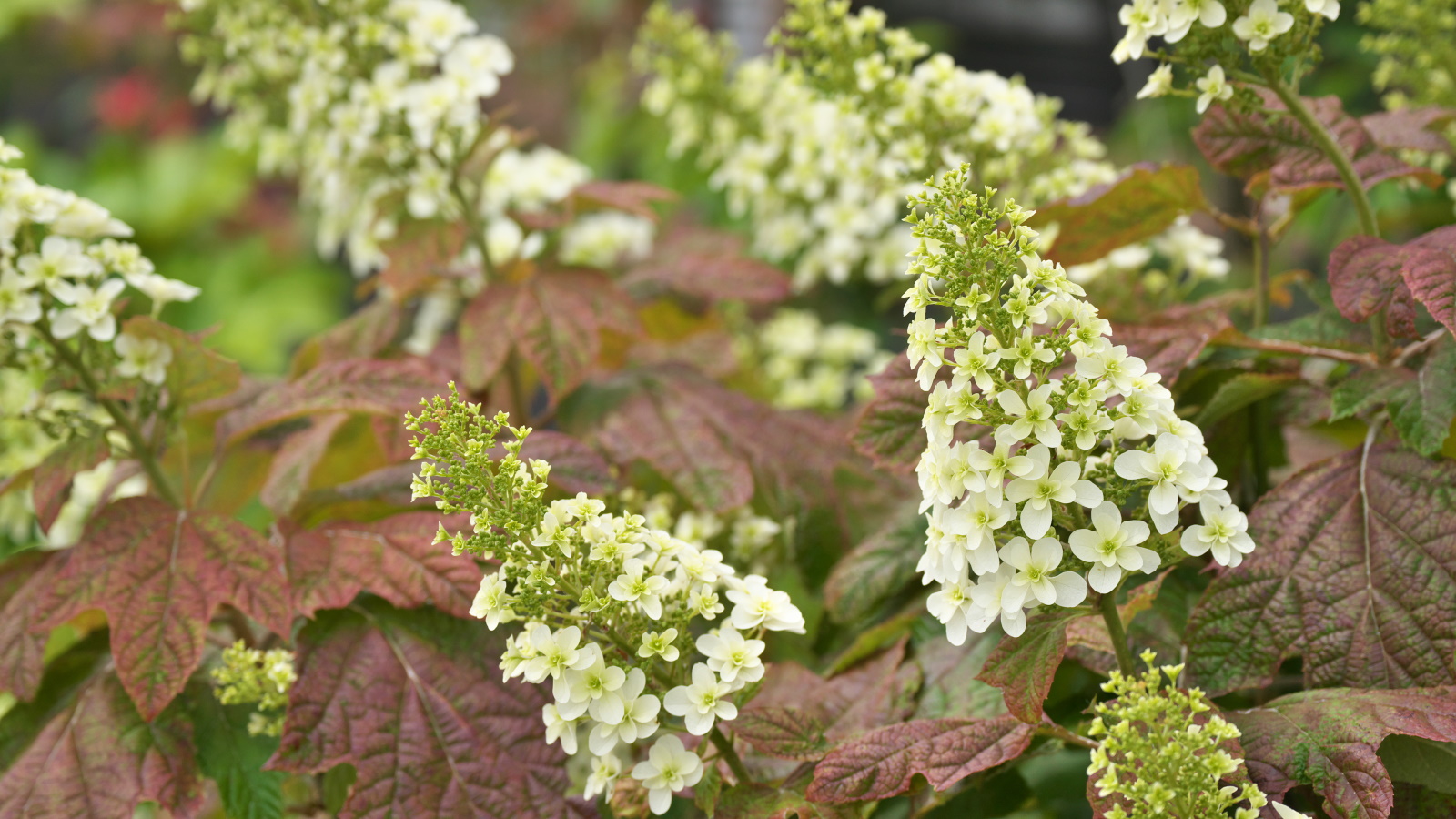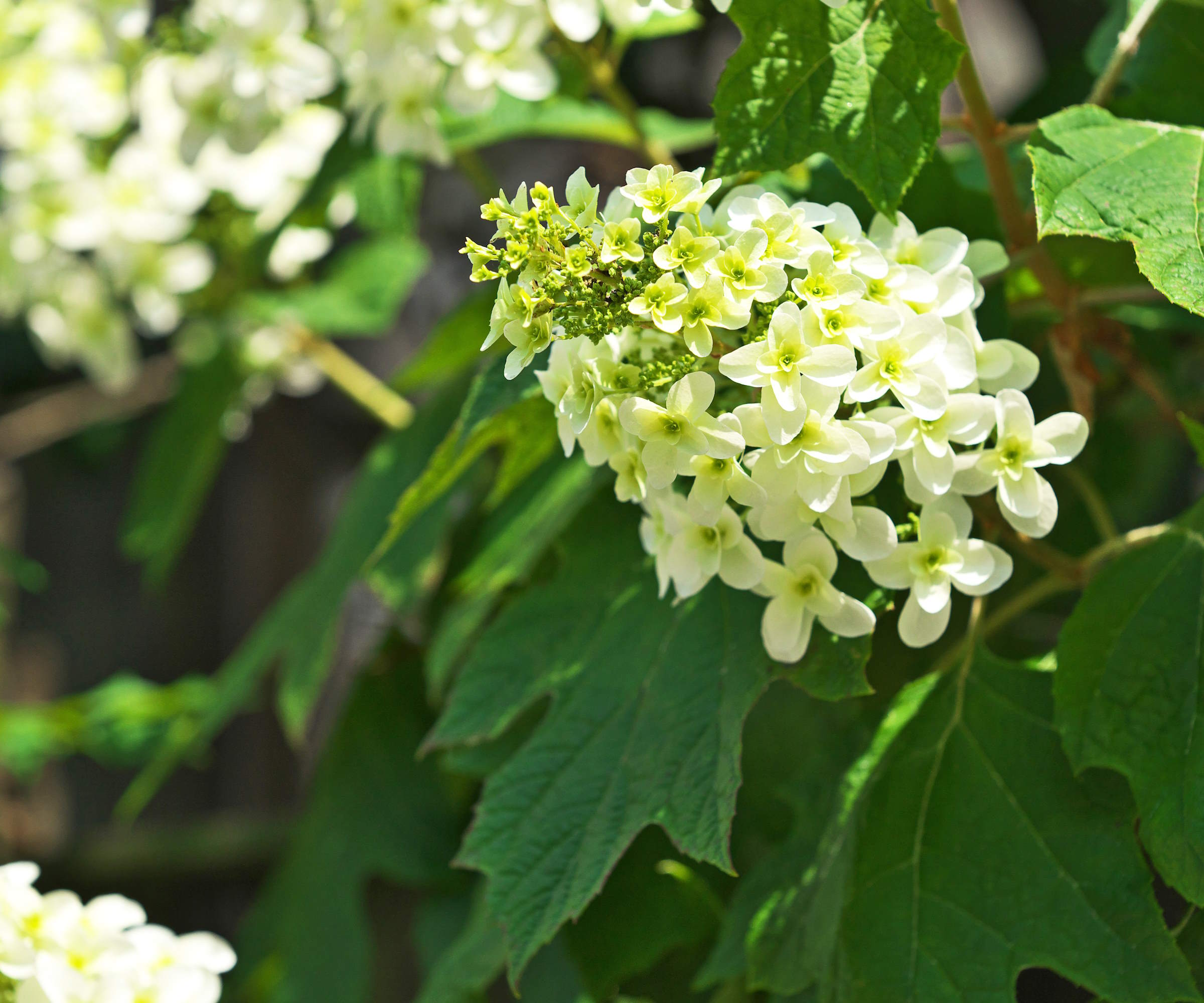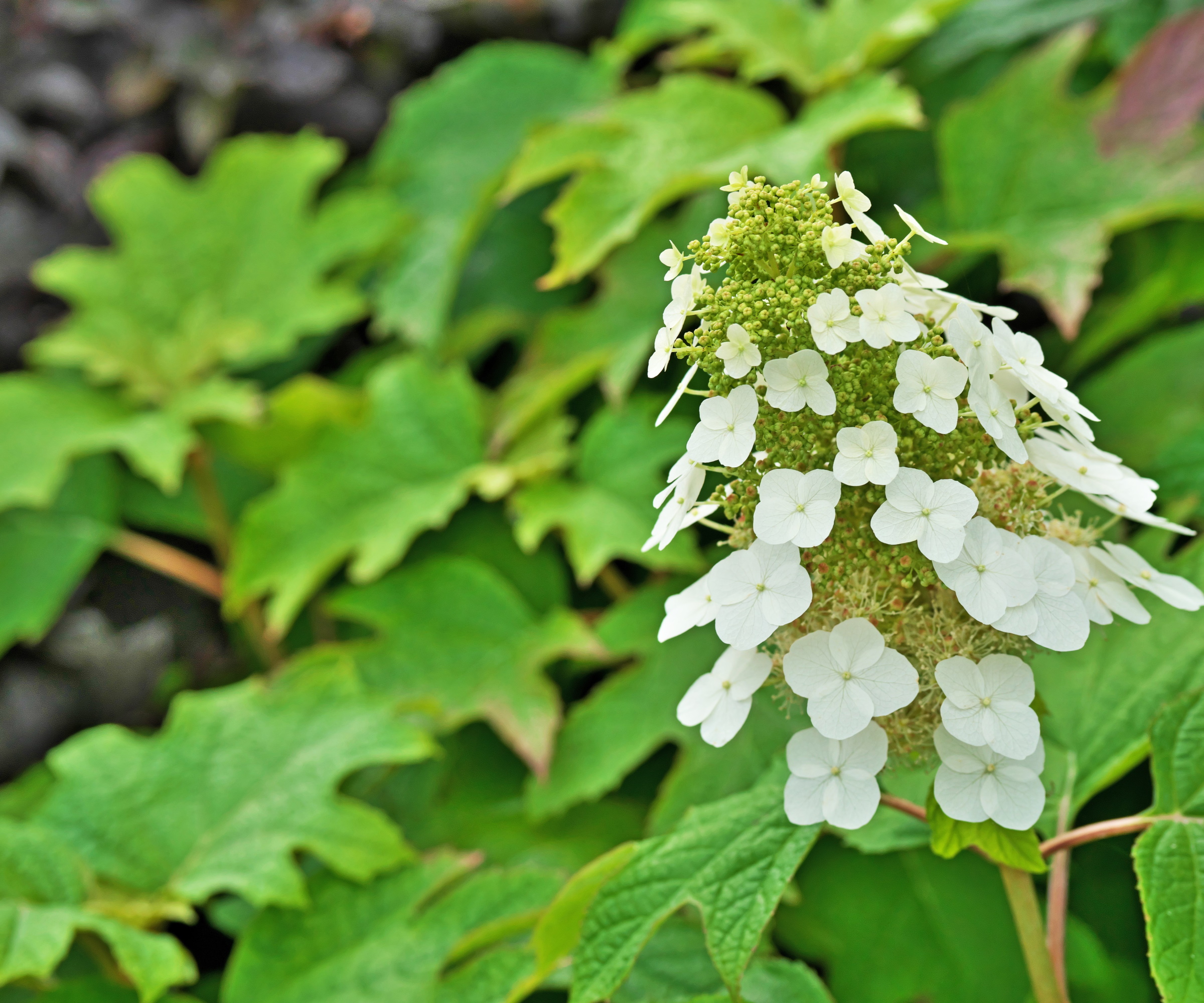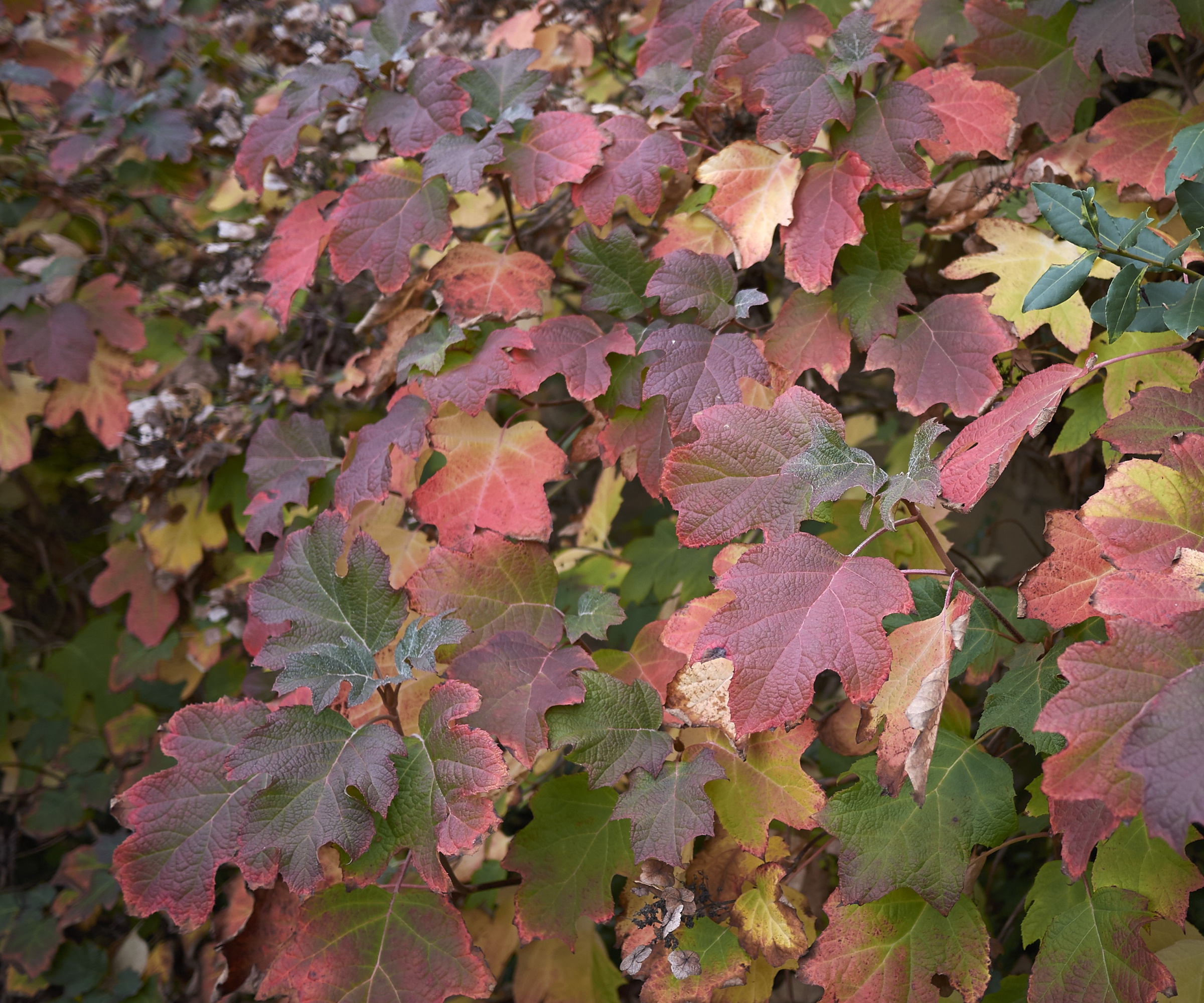This tough and resilient hydrangea will thrive even during scorching summer months, and as a gardener I highly recommend it
The oakleaf hydrangea is a shrub for all seasons, blooming in sweltering summers and showcasing brilliant fall color


Hydrangeas are classic garden shrubs, renowned for producing large flowerheads - or panicles - which are long-lasting and brilliantly colorful. Whether grown in containers or borders, hydrangeas can help to add height and structure to any space, often considered some of the most reliable and versatile shrubs worldwide.
Native to Asia and the Americas, there are over 80 known species of hydrangeas, meaning that there is a hydrangea suited to almost any situation. For example, if you are looking for flowering shrubs for full sun, Hydrangea macrophylla is a reliable and heat-tolerant pom-pom species grown in many yards across the country. For those with small, shady gardens, the climbing hydrangea, Hydrangea anomala, is a superb option for growing vertically. Whatever the space, there will be a hydrangea you can grow.
I worked as a professional gardener for several years and have grown many of the best hydrangea varieties. When working in Tuscany, one species stood out for its ability to handle the searing sunshine better than most others. Native to the United States, the oakleaf hydrangea, Hydrangea quercifolia, is the most resilient species I have grown. Here, I share everything I know about this tough and impressive shrub.

The oakleaf hydrangea can handle long, hot summers
With a changing climate and unpredictable weather, choosing to grow resilient and tough plants is important. While there are many different native plants to choose from, the oakleaf hydrangea thrives in hot summer weather with little help or assistance. You can even find Oakleaf hydrangeas available from Amazon.
Oakleaf hydrangeas can tolerate sun and shade

Growing best in US hardiness zone 5 to US hardiness zone 10, the oakleaf hydrangea is native to southern states across the US, including Florida, Georgia and Louisiana. It is typically found growing along riverbanks or at the edge of woodlands.
This versatile shrub can be grown in both sun and shade, tolerating a whole range of conditions. I have seen the oakleaf hydrangea blooming in a dark and shady border, with white panicles of attractive blooms sparkling in a woodland garden. I have also grown this species in a sun-baked garden in central Italy, tolerating the summer heat and producing a bounty of brilliant blooms despite the challenging circumstances. Whatever the weather, this hydrangea adapts.
While most guides and gardeners would advise planting the oakleaf hydrangea in partial shade, this shrub can handle the heat because of the thick oak-shaped leaves that conserve water. This evolutionary adaption has helped the plant to thrive in its native habitat all across the US.
Design expertise in your inbox – from inspiring decorating ideas and beautiful celebrity homes to practical gardening advice and shopping round-ups.
For those gardeners wondering whether hydrangeas are drought-tolerant, the oakleaf hydrangea is certainly far more resilient in dry weather than most other species. During the high heat of summer, however, when temperatures soar, oakleaf hydrangeas will benefit from infrequent but deep watering. It is preferable to soak the base of the plant with several cans of water once a week instead of watering everyday with small amounts that will evaporate from the soil surface.
Oakleaf hydrangea varieties

One of my favorite oakleaf hydrangea varieties to grow is Hydrangea quercifolia 'snow queen', available from Nature Hills. If you are considering landscaping with hydrangeas, 'snow queen' is an ideal selection, offering both height and structure at the back of the border or when planted as a hedge. The panicles are also impressive, flowering until late summer before turning brown. Do not cut these faded blooms, however, as the brown flowers provide interest and structure in the fall and winter garden.
With brilliant white blooms, this weather-resistant variety will tolerate full sun and deep shade. I have grown this variety in 3 different gardens and found it best suited to the back or middle of the garden border, eventually reaching 6 or 7 feet in height.
For smaller yards or for a shrub to grow at the front of the garden border, consider growing either 'munchkin' or 'pee wee', available to order online from Amazon. Both of these varieties are ideal for smaller spaces, growing to only 3 or 4 feet tall. As with most other oakleaf hydrangeas, these dwarf varieties can handle summer heat and direct sun.
If you need any more convincing to grow this shrub, one bonus of growing oakleaf hydrangeas is the foliage color in the fall. Come October and November, the oak-shaped leaves will turn purple, orange or red, transforming backyards with splashes of brilliant fall colors.
FAQs
Can I grow an oakleaf hydrangea in a pot?
Oakleaf hydrangeas tend to struggle when grown in pots. They prefer growing in borders where their roots can spread freely. While it is not impossible, it is more challenging to grow this shrub in a container. For pot displays, why not grow a different hydrangea more suited to pot growing, such as the popular Hydrangea paniculata 'Limelight', which produces brilliant green-white blooms?
Oakleaf hydrangeas are tough and resilient shrubs to grow in any yard. Whether you have a sunny or shady plot, these versatile plants will add color and impact. For more oakleaf hydrangea information, see our guide on when to prune an oakleaf hydrangea, to keep your shrubs in good shape this year.

Thomas is a Content Editor within the Gardens Team at Homes and Gardens. He has worked as a professional gardener for both public spaces and private estates, specializing in productive gardening, growing food and flowers. Trained in Horticulture at the Garden Museum, he has written on gardening and garden history for various publications, including The English Garden, Gardens Illustrated, Hortus, The London Gardener and Bloom. He has co-authored a Lonely Planet travel book, The Tree Atlas, due out in 2024.
